The A6700, launched in 2023, is the latest addition to Sony’s APS-C lineup, bringing a much-needed upgrade to the existing A6xxx series. Its release comes nearly three years after the introduction of the A7C, a full-frame camera sharing a similar form factor with the APS-C line.
In this comprehensive comparison preview, I will outline the ten key differences between these two cameras that you should be aware of.
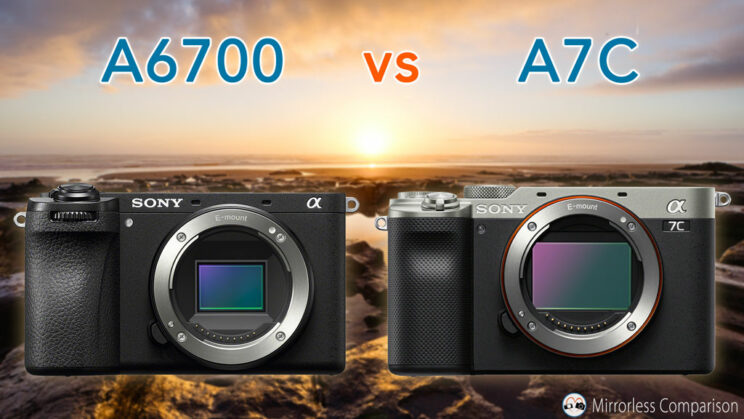
Ethics statement: the following is based on official specs. We were not asked to write anything about this product, nor were we provided any compensation of any kind. Within the article, there are affiliate links. If you buy something after clicking one of these links, we will receive a small commission. To know more about our ethics, you can visit our full disclosure page. Thank you!
1. Image Sensor
The most noticeable distinction between the A6700 and A7C is the sensor size. The A6700 features an APS-C sensor, which is smaller in comparison to the full-frame sensor found in the A7C. They both employ a backside-illuminated (BSI) design.
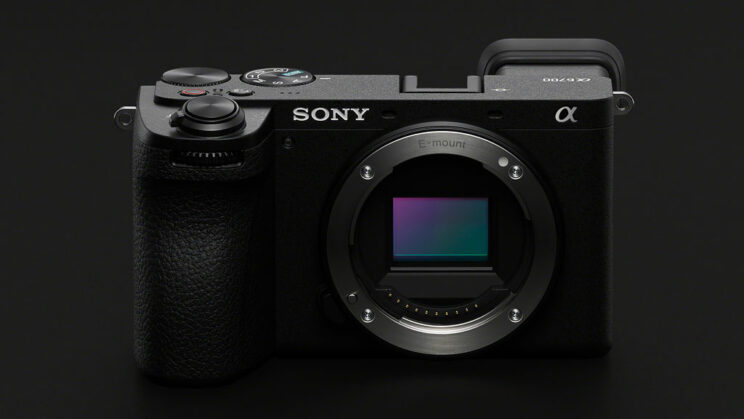
In terms of resolution, they are similar: 26.0 megapixels for the A6700, and 24.2MP for the A7C. The APS-C sensor is new (same as the FX30) whereas the full frame sensor is the same found in the older A7 III.
The A6700 is equipped with a faster image processor and a dedicated AI processing unit for subject detection.
The A7C offers a wider ISO range, as you can see with the table below:
Camera
Normal range
Extended range
A6700
100 – 32,00
100 – 102,400
A7C
100 – 51,200
50 – 204,800
The A6700 inherits the Creative Looks profiles, which are designed for both stills and video. The previous Creative Style settings found on the A7C are less effective for video and may lead to highlights being easily clipped.
Regarding RAW file settings, the A7C provides options for uncompressed and compressed RAW, while the A6700 offers lossless compressed RAW and compressed RAW. Additionally, the APS-C camera is capable of saving images in the HEIF 10-bit format.
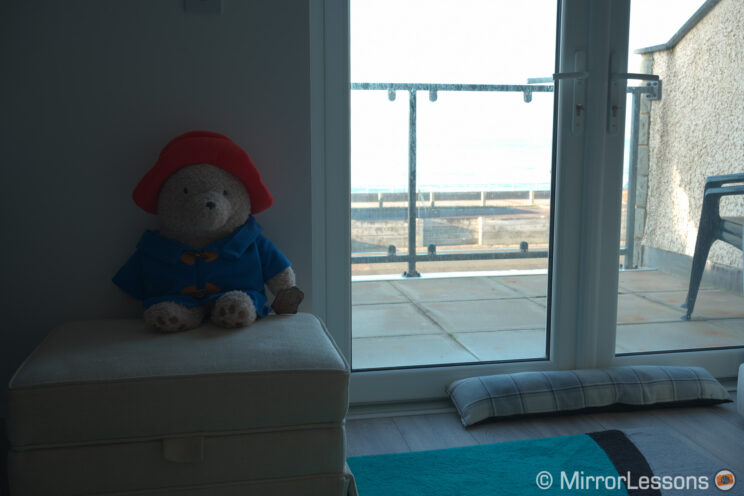

2. Autofocus
The A6700 inherits Sony’s most advanced autofocus system to date, surpassing the capabilities of the A7C. It excels in recognizing and tracking the entire body of a person, not just the face and eyes. Furthermore, it demonstrates a greater understanding of a person’s body in different poses and positions.
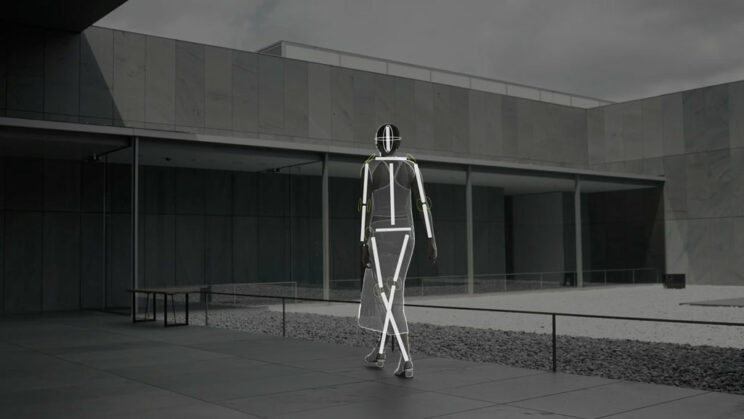
The Eye AF functionality is expected to be more precise, enabling detection of smaller subjects at greater distances from the camera. Additionally, the subject detection capabilities of the APS-C camera extend to animals and birds (body, head, and eyes), insects, as well as various vehicles.
On the other hand, the A7C can recognize humans and animals but does not include bird detection. Human detection is limited to faces and eyes, while animal detection is restricted to eyes only. For optimal performance, it is important to install firmware version 2.00 as the latter enables Eye AF for video.
In terms of low-light performance, the full-frame A7C holds an advantage with its -4 stops rating, providing one additional stop of sensitivity compared to the A6700’s -3EV rating. These measurements are based on ISO 100 and an aperture of f/2.
3. Video
The A6700 offers impressive video recording capabilities, allowing for 4K recording at up to 60p with a minimal 1.04x crop. On the other hand, the A7C is limited to 4K 30p without any crop at 24/25p, but introduces a slight 1.2x crop at 30p.
Furthermore, the A6700 goes beyond and supports 4K recording at 100p/120p. However, this mode involves a more substantial 1.58x crop.
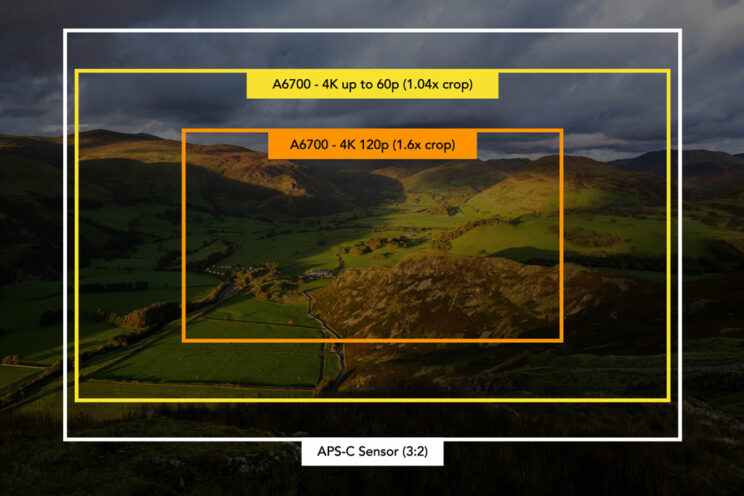
In terms of video quality, the APS-C model can internally record in 10-bit 4:2:2, offering a high level of color depth. It can reach bitrates of up to 600Mbps with the All-Intra compression. Additionally, it includes special settings like Cinetone and allows users to load custom Look-Up Tables (LUTs) for personalized color grading.
The A7C indeed provides a range of advanced video settings, including S-Log2 and S-Log3, which are also available on the A6700. However, the A7C’s internal recording is limited to 8-bit 4:2:0, and even the HDMI output is limited to 8-bit as well.
Both cameras lack an official limitation on recording time or clip length, giving users the flexibility to capture longer videos if desired (subject to the local temperature).
When it comes to audio capabilities, both the A6700 and A7C feature a microphone input and headphone output. Additionally, they support digital audio recording via the multi-interface shoe, providing additional flexibility for capturing high-quality audio.
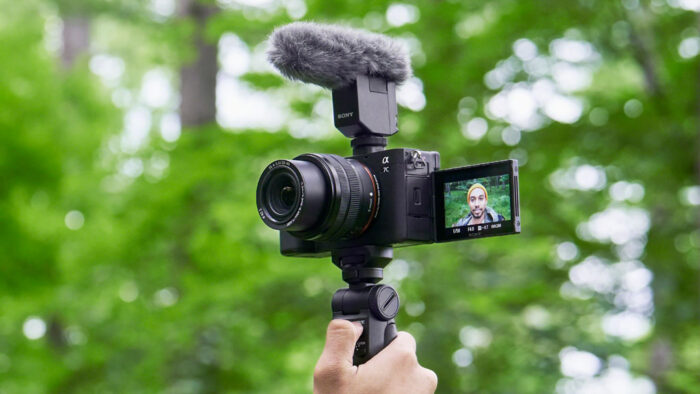
4. Active Stabilisation
Both the A6700 and A7C feature 5-axis image stabilization with a CIPA rating of 5 stops. However, the A6700 offers an additional “Active” setting for video recording, which utilizes digital stabilization by slightly cropping the sensor (1.1x) to improve the performance.
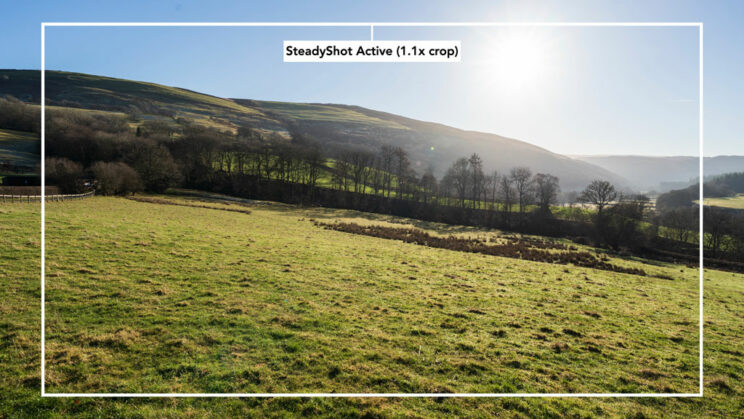
Another option for video stabilization, which is applicable to both the A6700 and A7C, is to use the Catalyst desktop software. By disabling stabilization on the camera and stabilizing the footage in post-production using the Sony application, you can utilize the gyro sensor data embedded in the video files. This method can yield satisfactory results, although it may lead to a slight loss of sharpness in the process.
5. Extra Features
The A6700 offers a plethora of additional features that are not available in the A7C:
- Focus Bracketing: This function allows you to capture multiple shots with different focus distances, which can later be combined and stacked using Sony’s Imaging Edge software.
- Variable Shutter: It gives you flexibility to adjust the shutter speed in smaller increments, useful to eliminate flickering with certain artificial light sources for example
- Auto-Framing: With this function, the camera automatically tracks a subject within the frame and dynamically adjusts the composition by cropping the image. This creates a smooth look, simulating the movement of a camera operator following the subject.
- Timelapse: The A6700 allows you to easily capture stunning time-lapse videos directly within the camera.
- Breathing Compensation: This feature counteracts lens breathing during video recording, eliminating the zoom effect when changing focus.
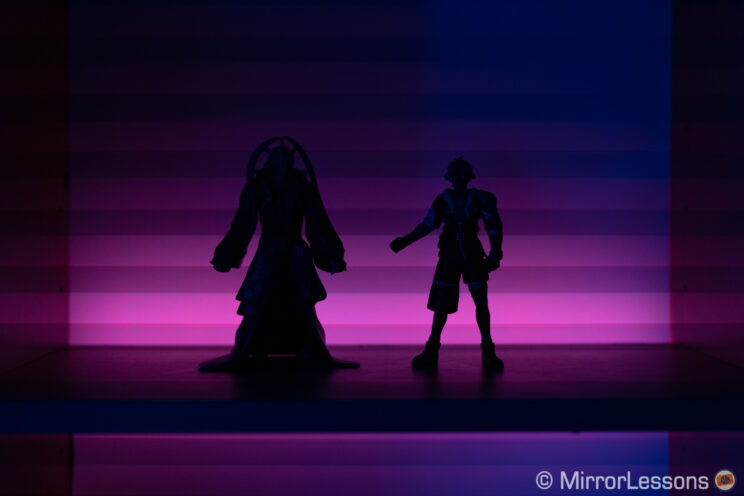
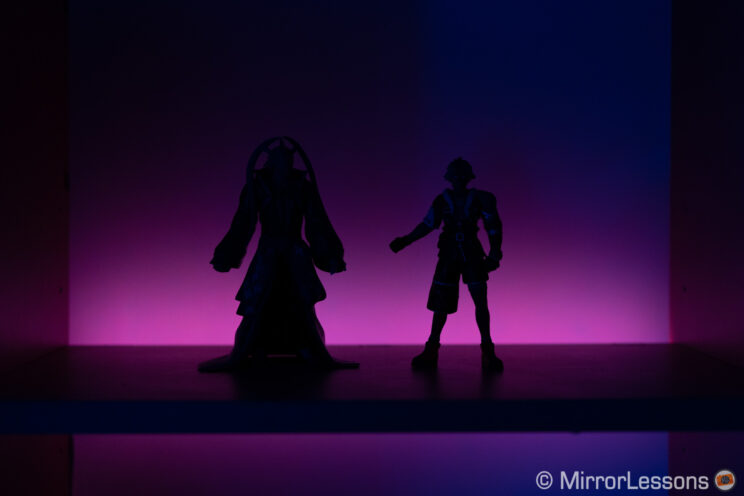
6. Body colours and Buttons
The two cameras have a similar design, with comparable size, weight, and weather sealing. The A7C is available in black or silver color options.
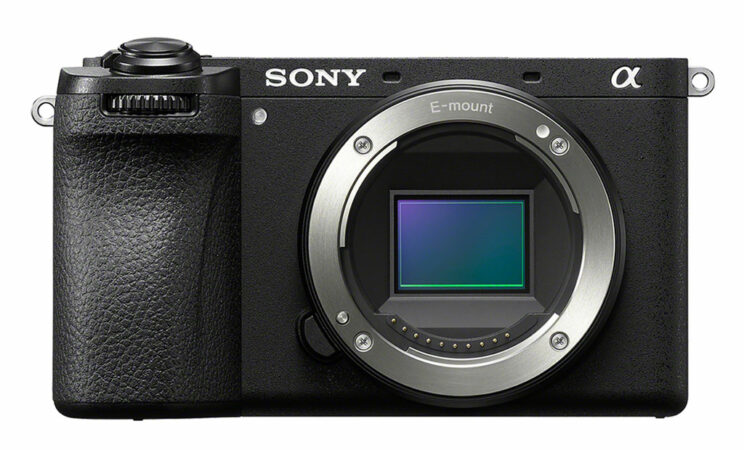
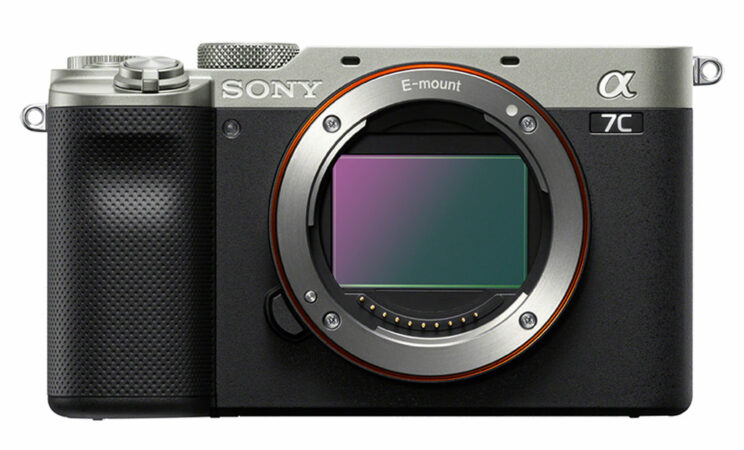
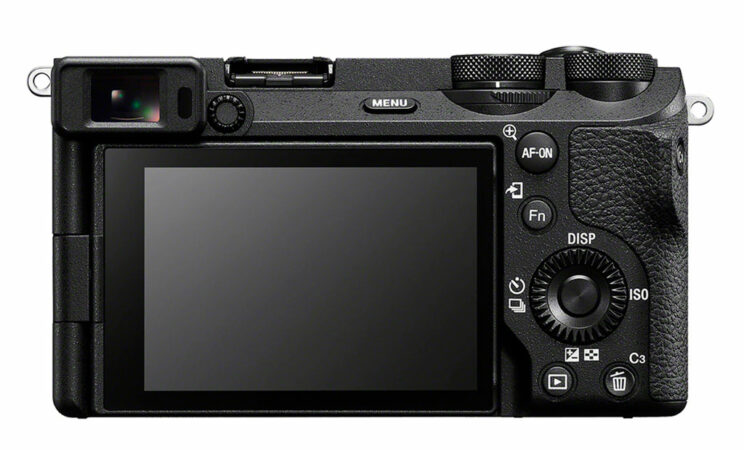
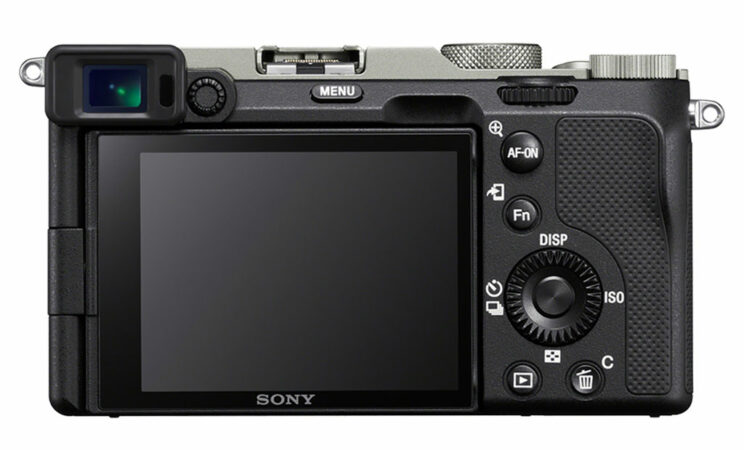

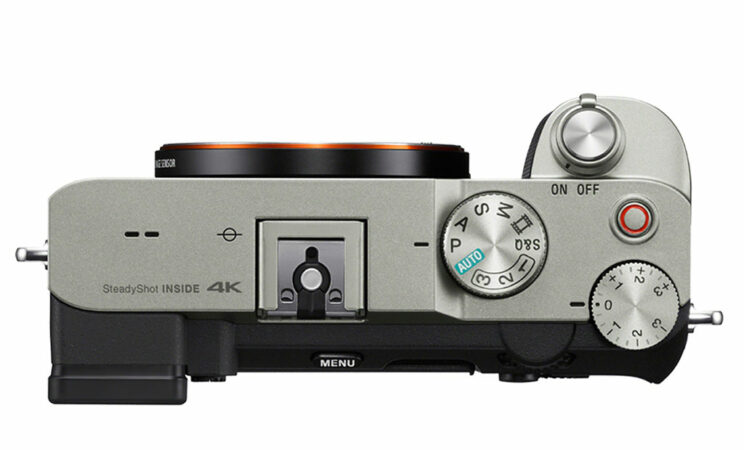
The A6700 offers additional physical controls, including a front dial on the grip and an extra custom button on top. It also features a convenient photo/video/S&Q sub-dial, allowing for quick switching between modes and the ability to save separate custom modes for photos and videos.
On the other hand, the A7C has a dedicated exposure compensation dial on top for easy adjustment.
7. Viewfinder
Both cameras feature similar viewfinders, equipped with a 0.39-inch OLED panel, boasting a resolution of 2.36 million dots, and a maximum refresh rate of 120 Hz.
However, there are differences in magnification and eyepoint. The A6700 offers a larger magnification of 0.70x compared to the A7C’s 0.59x. Additionally, the APS-C camera has a longer eyepoint of 22mm, while the A7C has an eyepoint of 20mm.
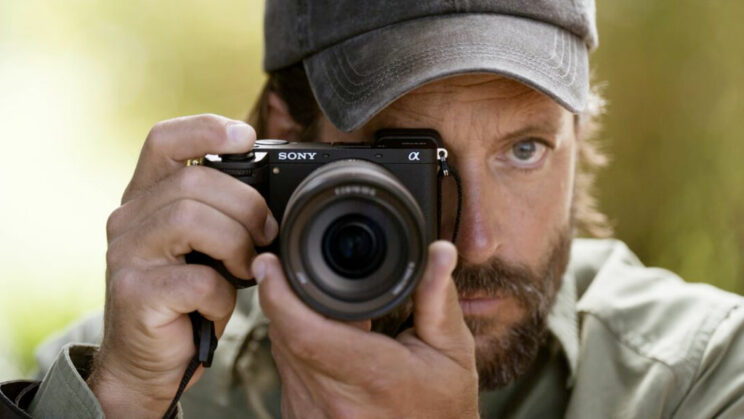
8. Touch Capabilities
Both the A6700 and A7C are equipped with a 3.0-inch vari-angle LCD screen. There are slight differences in resolution, with the A6700 offering 1.04 million dots compared to the A7C’s 0.9 million dots.
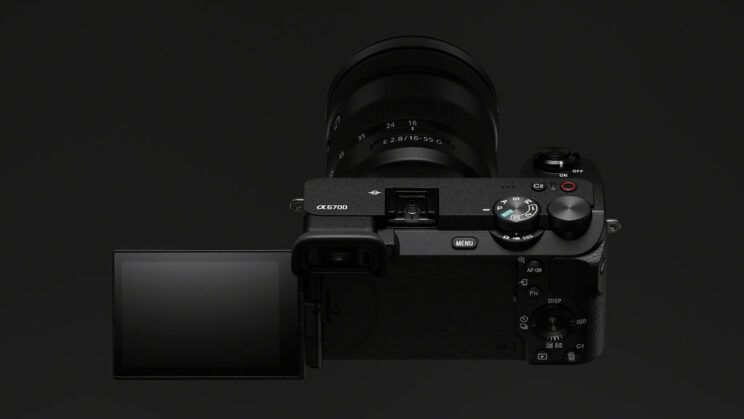
The A6700 has the advantage when it comes to touch functionality. It features the new menu system, which can be navigated entirely using your fingers. Additionally, it allows you to change other settings in the Fn menu through touch controls.
While the A7C does have some touch capabilities, they are mainly limited to functions such as capturing a photo and moving the focus point.
9. Battery Life
The A6700 and A7C both utilize the NP-FZ100 battery. However, the A7C boasts a higher CIPA rating, allowing for approximately 740 frames when using the LCD, compared to the A6700’s 570 photos. It’s important to note that these ratings are typically more conservative than what can be achieved in real-life usage.
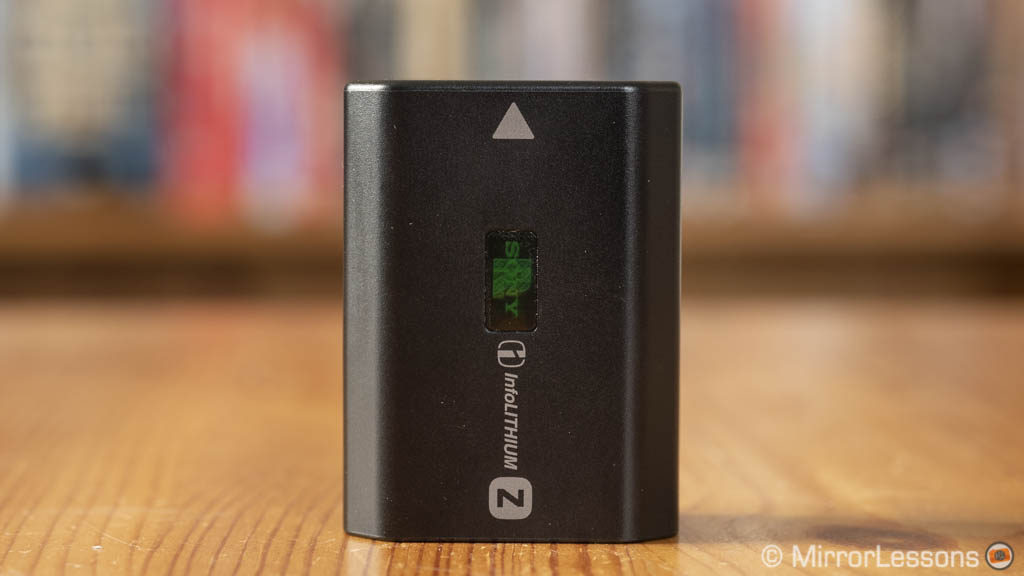
Both cameras offer the convenience of USB-C charging, allowing for easy and flexible power replenishment.
10. Price
The A6700 was released with a retail price of $1400, £1450, and €1700 for the body only.
On the other hand, the A7C can be purchased for approximately $1600, £1650, or €1500.
Please note that the prices mentioned above are current as of July 2023.
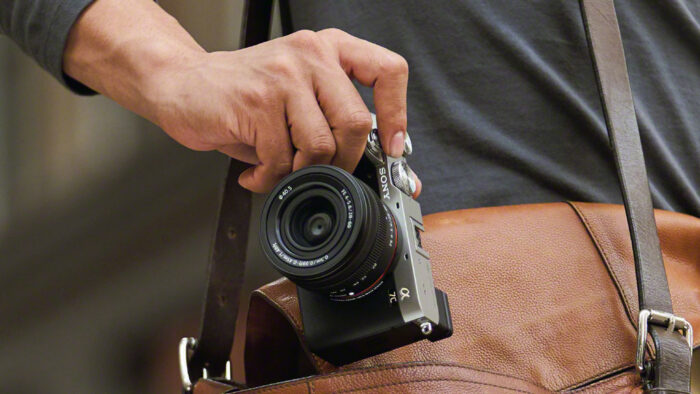
Additional comparison articles:
A6700 vs A7C
Conclusion
The A6700 and A7C offer distinct advantages depending on your specific needs and priorities.
The A6700 shines as a versatile and affordable option. With its advanced autofocus system, more complete 4K recording capabilities, and additional features like focus bracketing, it delivers excellent performance for both photography and videography. The compact size and touch functionalities further enhance its appeal.
On the other hand, the A7C caters to those seeking the superior dynamic range and low-light image quality offered by a full-frame sensor. When available at a discounted price, it becomes hard to resist giving this camera serious consideration.
We must not forget that a smaller sensor like APS-C also brings its own set of advantages. While the A6700 may not have specific standout features for wildlife photographers compared to previous models, the crop factor proves to be useful when capturing images of distant subjects. Additionally, the enhanced animals and bird tracking capabilities make it a worthy consideration for those interested in nature photography.
Ultimately, the decision between the A6700 and A7C comes down to the trade-off between sensor size and budget. If you prioritize affordability, advanced video features, and versatility, the A6700 is an excellent option. However, if image quality and low-light performance are paramount, the A7C’s full-frame sensor will be a compelling choice.
Check price of the Sony A6700 on
B&H Photo
Check price of the Sony A7C on
Amazon | Amazon UK | B&H Photo | eBay
